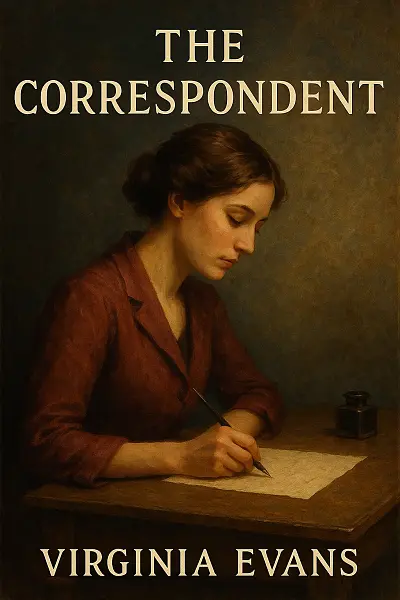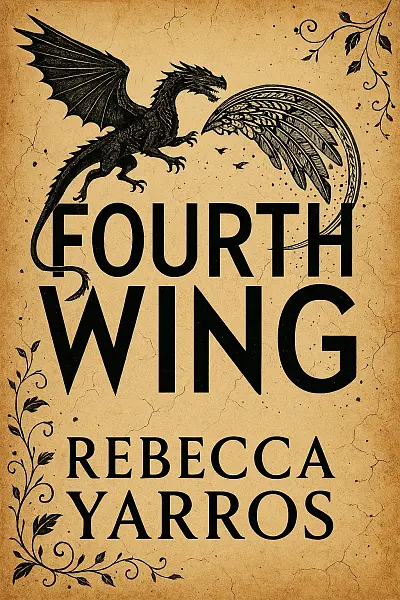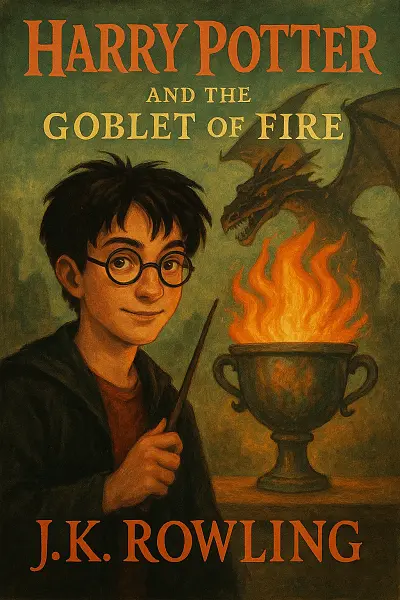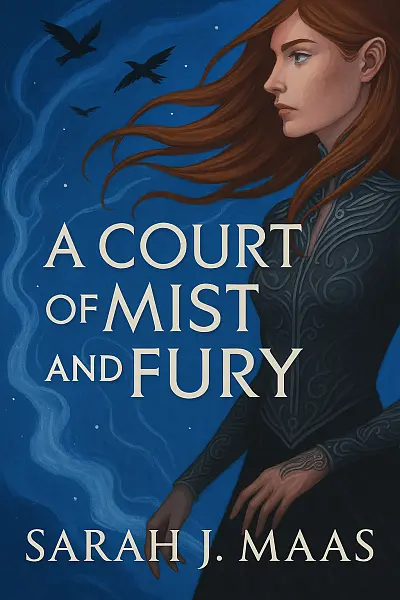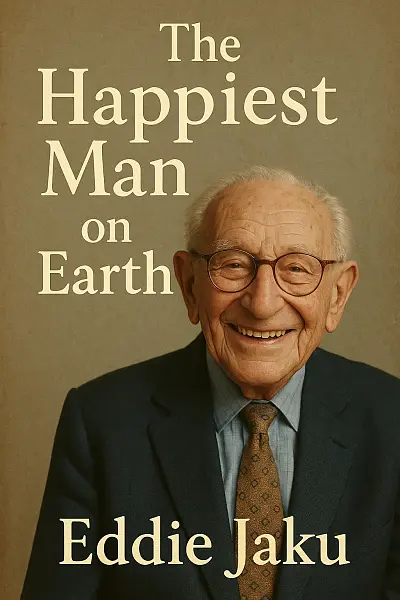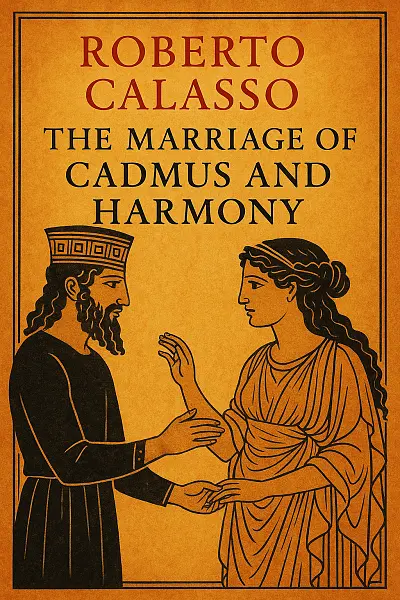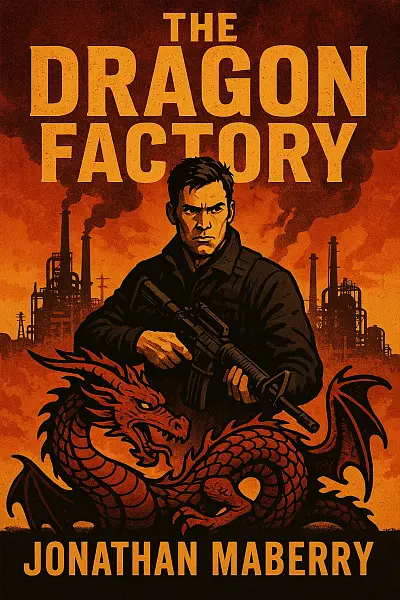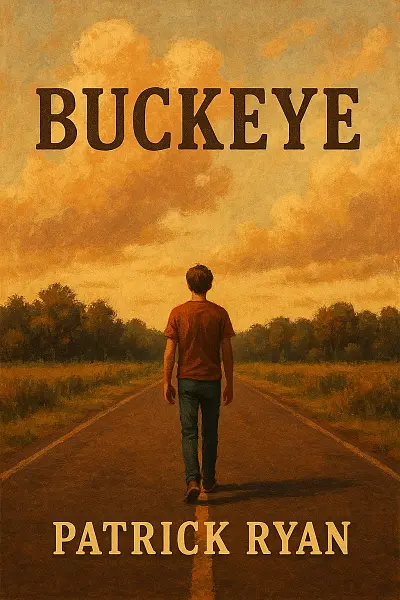
Buckeye
by: Patrick Ryan
Cal Jenkins aches for meaning in small-town Ohio, especially after WWII leaves him on the sidelines. Until one night—charged with victory and longing—he crosses paths with Margaret Salt, whose own secrets threaten to unravel everything. Their brief connection ignites a spark that resonates for decades, complicating two families’ futures.
As Bonhomie thrives postwar, Cal and Margaret each struggle to balance duty, desire, and truth, knowing one mistake could upend generations. When the past resurfaces amid new turmoil, everything hangs on whether old wounds can heal.
Patrick Ryan’s storytelling feels both sweeping and intimate, capturing those raw, universal hungers for love and belonging.
""Sometimes, the smallest roots hold the greatest strength when storms tear at the heart’s soil.""
Literary Analysis
Writing Style
Atmosphere
Quietly intense, tinged with nostalgia and longing. The setting crackles with the undercurrents of small-town Ohio—think sun-bleached fields, gentle loneliness, and the ever-present hum of secrets. There's a bittersweet warmth, as if the author dusts every scene in golden midwestern twilight, making even the ordinary moments pulse with emotional weight.
Prose Style
Deceptively simple, clear, and purposeful. Ryan's sentences flow with understated grace—never showy, but often carving deep with just a phrase or a perfectly chosen image. Dialogue feels lived-in, internal monologue rings true, and details are delivered with the kind of precision that makes them linger in your mind long after.
Pacing
Measured and reflective—never rushed, always intentional. The book unfolds at its own deliberate pace, letting characters and themes breathe. Instead of racing from plot point to plot point, Ryan invites the reader to meander, to notice the subtleties in a glance or the echoes in a quiet room. Some readers might crave more momentum, but for those who savor immersion, the pace is pitch-perfect.
Character Focus
Intimate, raw, and deeply personal. Every character is sketched with empathy—even minor ones feel dimensional. Ryan’s approach is to peel back layers at a human pace, revealing vulnerability in gentle waves rather than dramatic shocks. Relationships drive the narrative, and the emotional core is always front and center.
Mood and Feel
Reflective, eddying between melancholic and hopeful. There’s something undeniably tender about the way Ryan handles both pain and possibility; moments of humor gleam through the shadows. Expect emotional honesty, sometimes uncomfortable in its closeness, but with a persistent thread of yearning that keeps you turning pages.
Imagery and Sensory Details
Evocative, immersive, never overwrought. The landscapes, weather, and textures of daily life are painted with a light but vivid touch, rooting every moment in the five senses. There's a subtleness here—you won’t be overwhelmed with description, but what’s offered is so keenly observed it sparks memory and sensation.
Overall Rhythm
Gentle undulations, punctuated by quiet revelations. This is a book that moves like a contemplative walk through familiar streets—occasional flashes of insight, frequent pauses to take it all in, and a deep, satisfying emotional resonance that lingers after the final page.
Key Takeaways
-
Awkward first kiss on the high school bleachers—equal parts cringe and heartbreak
-
A hilariously inappropriate Halloween party, where secrets spill with every cup of spiked punch
-
Razor-edged nostalgia: teen friendships that shimmer with loyalty and betrayal
-
Moments of deadpan humor breaking through the Ohio gloom—Ryan’s wit absolutely sparkles
-
That painfully real fight in the kitchen—every word lands like a gut punch
-
Small-town rumors swirl, shaping destinies and dooming romances before they even start
-
Bittersweet finale: nothing wrapped in a bow, but every emotional thread pulled tight
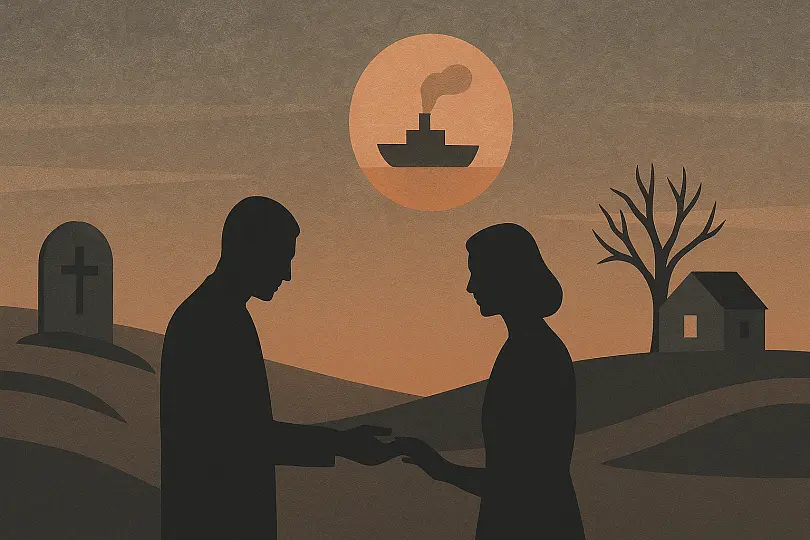
Haunted by war, a soldier seeks forgiveness in a shattered America
Reader Insights
Who Should Read This
If you’re someone who loves coming-of-age stories that aren’t afraid to get real about messy family dynamics, nostalgia, and the bumps and bruises of growing up, Buckeye is probably a book you’ll want on your shelf. Seriously, if you get a kick out of character-driven tales set in the Midwest—think small-town vibes, complicated parent-child relationships, and snapshots of the ‘70s and ‘80s—this one’s got your name on it.
- Love stories that feel honest and a little bittersweet? You’re in for a treat. Patrick Ryan really nails that mix of humor and heartbreak, so if you’re into books that make you laugh out loud and cringe a little at the same time, this is your jam.
- Short story fans, rejoice! The episodic style means you don’t have to commit to a massive narrative—each chapter kind of stands alone, but they add up to something bigger. Perfect for people who like dipping in and out.
- If you grew up in the ‘70s or ‘80s, or just have a soft spot for vintage Americana, this book gives off major nostalgia feels without sugarcoating anything.
Now, some honest advice if you’re thinking about picking this up:
- If you need a fast-paced, plot-heavy novel, Buckeye might feel a bit slow or too slice-of-life for you. There’s not a ton of action or twists—it’s more about the moments and the people.
- Same goes if you aren’t big on coming-of-age or family dramas—it leans heavily into those themes.
- And if you’re looking for lush, flowery prose, that’s not really the vibe here. Ryan’s writing is super clear and straightforward—great for some readers, but maybe not for those who want to get lost in poetic descriptions.
Bottom line: If you like relatable, sometimes painfully real glimpses of growing up with all the humor, awkwardness, and heartbreak that comes with it, you’ll probably love this book. But if you crave action or a really tightly woven plot, you might want to skip this one or save it for when you’re in a more reflective mood.
Story Overview
Looking for a novel that’s equal parts coming-of-age nostalgia and sharp family drama? Buckeye by Patrick Ryan drops you into small-town Ohio in the 1970s, where a teenage boy’s world is suddenly upended by secrets and unexpected connections. With warmth, wit, and a keen eye for the messy side of growing up, this atmospheric story explores the lines between love, loyalty, and the truths we try to hide—from others and ourselves.
If you’re craving a heartfelt, bittersweet read about missed chances, complicated families, and the quirky beauty of finding your place, Buckeye serves up all that and more without ever letting you predict what’s coming next!
Main Characters
-
Jason: The quietly observant protagonist whose coming-of-age forms the book’s emotional core. He grapples with sexuality, loneliness, and complicated family loyalties.
-
Jason’s Mother: A conflicted, often overwhelmed parent who struggles to navigate her son’s adolescence and her own disappointments, shaping much of the book’s emotional tension.
-
Jason’s Father: An absent figure whose choices cast a shadow over the family, fueling much of Jason’s inner conflict and sense of abandonment.
-
Uncle Jack: The enigmatic, larger-than-life uncle whose presence offers Jason glimpses of acceptance and alternative ways of being—he’s a catalyst for self-discovery.
-
Mindy: Jason’s close friend and confidante, offering moments of escape, humor, and much-needed support as he navigates difficult experiences.
If You Loved This Book
If Buckeye by Patrick Ryan left you craving more evocative, bittersweet coming-of-age tales, you’ll find it shares deep emotional roots and an unflinching honesty with Alice Munro’s Dear Life. Both works unravel the intricacies of youth, secrets, and family dynamics through sharp observation and subtle storytelling, making you feel the aching nostalgia of adolescence. Similarly, there’s a striking resonance with Mary Karr’s The Liars’ Club—Buckeye captures that same raw vulnerability and wry humor as it examines fractured family bonds and the peculiar ways memory and reality interlock.
On the screen, there’s a definite kinship with the tone and atmosphere of Boyhood. Just like Richard Linklater’s film, Buckeye unfolds in a series of poignant, slice-of-life vignettes, weaving together the quiet moments and the seismic shifts that define growing up. If you find yourself drawn to stories where the ordinary shimmers with quiet significance, these connections make Buckeye an especially compelling pick.
Expert Review
What remains unspoken within a family—or a town—can haunt generations, shaping destinies as surely as any war or triumph. Buckeye by Patrick Ryan plunges into the shadowy spaces between public history and private longing, posing blunt questions about forgiveness, secrecy, and the fragile architectures of love. It asks: Is it ever possible to truly know the ones we love, or are their histories—our shared past—a palimpsest forever rewritten by memory, denial, and desire?
Ryan’s writing carries the polish of lived-in Midwestern realism: sentences are quietly sturdy, with a tactile sense of weather and time, from the humid pressure of a pre-storm sky to the sticky tension around a family table. The narration floats gracefully between perspectives, balancing Cal’s grounded doubt with Margaret’s evasions, Becky’s unsettling clarity as a seer, and the younger generation’s restless inquiry. Ryan is adept at compressing decades into a few vivid brushstrokes—his shifts in chronology are smooth, subtly echoing how trauma and hope ripple across years. Conversations ring with authenticity (rarely dipping into melodrama), and the interiority on display—especially in the desperate, half-articulated wishes of Ryan’s women—lends the novel a rare intimacy. However, at times, the language can slip into the overly controlled, blunting what might otherwise be searing emotional crescendos. The book’s steady, almost reticent rhythm—while appropriate for its Midwestern milieu—may frustrate readers looking for sharper narrative hooks.
Themes of belonging, inherited guilt, and the cost of silence reverberate on every page, but where Buckeye truly stands out is in its candid depiction of spiritual yearning. The character of Becky, with her ability to commune with the dead, offers a literalization of the ways grief lingers and transforms; the supernatural is embedded as a function of emotional reality, not just spectacle. The novel is equally incisive on the gendered labor of secrecy—how women bear and bury truths for their families, then bleed quietly under the burden. Set against the background of America’s shifting postwar optimism—and later, Vietnam’s corrosive uncertainty—the story never becomes a historical diorama. Instead, Ryan interrogates how ordinary Americans navigate change with both grace and damage, never denying the sharp ache of nostalgia or the pain of what’s left unsaid.
Within the tapestry of American family sagas, Ryan’s Buckeye deserves mention alongside works by Jane Smiley and Richard Russo—novels that dissect small-town mythos with tenderness and bite. Yet Ryan sets himself apart with his willingness to embrace the uncanny, imbuing Bonhomie with a haunted, liminal quality. The book expands Ryan’s previous exploration of familial complexity into multigenerational, near-Gothic territory, avoiding both sentimentality and cynicism.
Buckeye stumbles in moments of restraint; its refusal to push characters toward greater confrontation, or to let language occasionally run raw and ragged, saps the potential for truly shattering epiphany. Yet in its hushed heartbreaks and luminous understanding of human frailty, this novel confirms Patrick Ryan as a master of nuance and empathy—a vital voice for our age of reckoning with both private and collective pasts.
Community Reviews
I still can't get over that scene with the storm and the old truck, headlights flickering like warnings. It hit too close to home, reminded me of nights waiting for someone who never came back. Buckeye lingers like memory.
So there I was, thinking I'd sleep easy, but Buckeye kept poking at my brain like an itch you can't scratch. That one scene under the trees? Yeah, good luck forgetting it. Thanks for the new recurring dream, Patrick Ryan.
not gonna lie, after reading the scene with the fireworks over the lake, my brain just stopped. i kept seeing those colors in my dreams. buckeye: 1, my sleep schedule: 0.
okay but that moment when everything just spiraled at the lake left me staring at the wall for like ten minutes, i genuinely forgot how to function. patrick ryan, what did you just do to my brain?
That scene where the kids are by the creek just keeps looping in my head. I swear I heard the water at night. Buckeye gets under your skin and refuses to leave. Patrick Ryan, what did you do to my sleep schedule?
Cultural Context & Discussion
Local Perspective
Patrick Ryan’s Buckeye finds intriguing echoes in this cultural context, especially through themes of identity, family secrets, and small-town tension. Let’s break down how and why this story resonates (or challenges traditions) here:
-
The impact of hidden histories—and the way families deal with scandal—mirrors local historical events, like generational secrets left over from wars or political upheaval. That sense of trying to protect children from the past is strikingly familiar and hits home.
-
Confronting taboo topics—particularly around sexuality and difference—pushes against traditional norms, much like local literary classics that grappled quietly with such issues. Some readers may feel discomfort, while others appreciate the honesty and emotional risks.
-
The small-town setting, with its cliques and whispered rumors, feels instantly recognizable—think of rural communities here where privacy is scarce and everyone knows everyone’s business. This is prime gossip territory, and it’s relatable!
-
Stylistically, Ryan’s blending of nostalgia with bittersweet humor echoes beloved national coming-of-age stories, yet his directness toward tough subjects gives it a fresh twist that might challenge more conservative tastes.
In short: Buckeye connects by exploring truths that are both universal and pointedly relevant here, but packs extra punch by not dodging messier realities some local fiction might sidestep.
Points of Discussion
Notable Achievement:
Buckeye by Patrick Ryan has been celebrated for its poignant storytelling and sharply observed coming-of-age narrative, receiving widespread praise from critics and readers alike for its authentic voice and tender portrayal of growing up in the American Midwest. The book's heartfelt depiction of family and adolescence has made it a standout within contemporary literary fiction.
